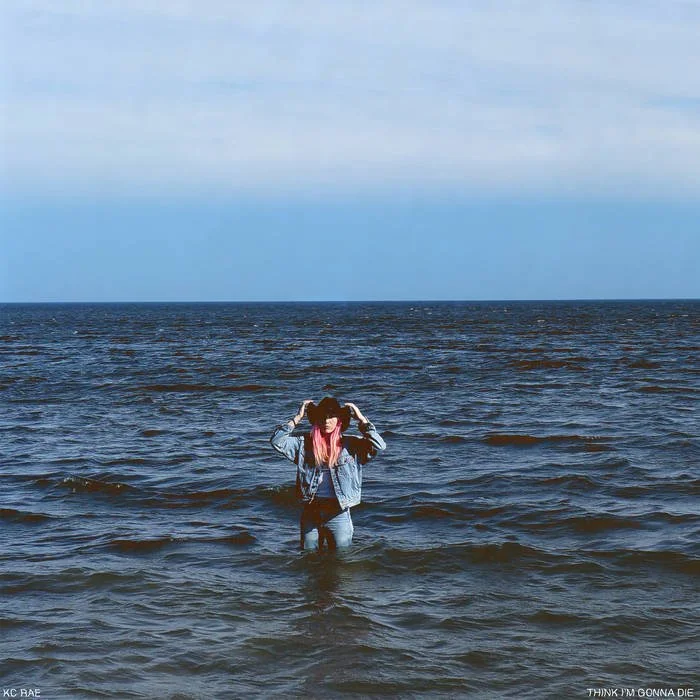Bears in Trees - ‘How to Build an Ocean: Instructions’ review
Bears in Trees by @chazzadnitt
This Friday, Bears in Trees will release their third studio album, How to Build an Ocean: Instructions, via their own I Sure Hope It Does label. For a band that has carved out its niche through unconventional means, self-releasing this album feels entirely appropriate.
Spanning 12 tracks, this record is a journey through personal conflict, yet serves as an ode to the simple delights of normal life. True to form, it's laden with nods to literature, philosophy, and film, alongside personal experiences as they navigate finding purpose amidst the sometimes overwhelming, crushing void of cosmic indifference.
How to Build an Ocean: Instructions is a collection of undeniable bangers from start to finish. I dare you to even try avoiding the urge to crank the volume and dance in your socks with your third glass of wine while listening. Quite frankly melancholy has never sounded this fun.
This album is the most mature sound we’ve heard from Bears in Trees, which we assume stems from the album's origins in late 2022. This extended gestation provided a precious commodity: time. Refining their songwriting process, and collaborating with legendary producer George Perks, resulted in an album that showcases a band that has evolved significantly, articulating their ideas in their most ideal way.
From the moment the brass kicks in at the opening of "Your Favourite Coat," it's clear that Bears in Trees are venturing into new territory. Like a butterfly emerging from its cocoon, the band has been reborn into something grander. The addition of brass is not only outstanding but so expertly integrated throughout the record it feels as though it was always meant to have been.
The tone for the album is set immediately with the opening lines, "Everyone just be quiet for a second." This phrase will strikingly resonate with anyone who has faced mental health challenges or simply experienced life in the modern world. It's never explicitly clear whether our narrator is railing against the voices in their own head, the overwhelming cacophony of the room, or the increasingly always-on digital landscape as they attempt to make sense of the moment. Regardless, the moment serves as a powerful introduction to the album and a turmoil that threads throughout.
"Your Favourite Coat" upholds the great British tradition of pop songwriting, finding joy in the small facets of life despite its harsh realities, much like the classics "Common People" by Pulp and "Let’s Dance to Joy Division" by The Wombats. The track suggests that, perhaps, if we fully embrace the moment everything might just feel okay for a while. Sonically, it embodies this juxtaposition: the sound is jubilant as if urging us to seize the moment, while lyrically it commands everyone to quiet down so we can truly experience it.
Up next is the lead single, "Things That Look Like Mistakes," a track that explodes with energy right from the start. Musically, it's the ideal song to blast and, as the lyrics suggest, dance around the room in your socks. It's destined to become a concert closer for many Bears in Trees shows, sending everyone home in the best possible spirits.
We recently chatted to the band about how lyrically this song, and the album, celebrates embracing those fleeting moments of joy in life. Those moments might not provide a permanent escape from life's crushing void of nothingness, but do offer brief respites filled with pure beauty and joy.
With an album as stacked as How to Build an Ocean: Instructions, it's nearly impossible to resist diving into a complete track-by-track analysis. The sheer joy of playing this album is indescribable. Closing out the opening quarter of the album is "Injured Crow". Its central lyrical hook, "moments passing... and nothing lasting," is a poignant ode to those who feel the world is spinning faster than they can keep up and struggle to recall a time free from the troubles and pain that plague them.
The next trio of tracks—“I Can’t See Anything I Don’t Like About You”, “All You Get Is Confetti”, and “Tai Chi With My Dad”—are among the strongest on the album. “I Can’t See Anything I Don’t Like About You” encapsulates the classic Bears In Trees sound. Across its three-and-a-half-minute duration, it is brimming with a rich array of pop culture references, both high and low brow, ranging from Dante’s Inferno to Eternal Sunshine of the Spotless Mind to Scott Pilgrim vs. The World and much more in between. These references metaphor how our memories, good or bad, are woven into the fabric of our identities and individual lore. Musically, the track builds to a robust crescendo, enriched by the same vibrant brass that elevates “Your Favourite Coat,” adding layers of depth and giving it a fittingly cinematic climax.
It’s really hard to pin down a favourite track on this record. But if we tried, a particular mention has to go to “All You Get Is Confetti”. It's one of the slowest songs on the album, built around acoustic instrumentation and soaring vocals, making it profoundly impactful. Lyrically, it embodies everything that makes Bears In Trees so compelling: deeply relatable lyrics like “I don’t take my phone off silent anymore”—something we haven’t done in over a decade—blend seamlessly with cultural nods such as a reference to Carly Rae Jepsen’s “Call Me Maybe.” Furthermore, it features a line that could succinctly sum up the band and its significance to their ‘sandboxes’: “You can’t be everything for everyone, but you can be everything to someone.” We find ourselves returning to it time and again.
The stripped-back instrumentation carries over into the next track, another favourite on the album, "Tai Chi With My Dad." This song is drenched in melancholy as it confronts the challenge of finding meaning in a seemingly senseless world and the juxtaposition of growth, joy and pain. The lyrics employ evocative symbolism, such as drinking coffee with a raven; a creature traditionally linked in folklore with loss and a mediator between life and death. It’s a song that acknowledges painful growth, recognising that there is still time before the end, but the journey ahead will be arduous. Nevertheless, to reach the rewards that await us at the end, we must endure the sadness and pain.
This track is one you could easily lose yourself in, with simple vocals and muted guitar until the soft, atmospheric strings and rising voices build into the choruses. These choruses feel like a euphoric wave of emotion, instilling a sense of resolve to forge ahead.
We only encountered our second pre-release single seven tracks deep into the album in the form of “I Wanna Feel Calm.” Again, as with most of the tracks, it’s a complete jam and musically picks you right back up after the two slower tracks just before. This track is a love letter to what pulled Iain out of the wells of burnout; a reminder to us all to lean on our own support networks. While writing the track, Iain was stuck in a cycle of self-criticism. Reconnecting with loved ones helped them accept themselves and "cherish every insignificance."
"Henry Says" begins with a candid vocal outtake, capturing a moment when one of the band members didn't realise the recording had started. The track's instrumentation evokes fellow South Londoners, Squeeze, and fittingly contains an explicit nod to their own slice of the city, Croydon—a city within a city, as Bears in Trees describe it. Our hometowns are a part of us, elements we can never truly escape. This connection is visually represented on the cover of How to Build an Ocean: Instructions, which features a map of Croydon annotated with places significant to the band's journey from adolescence to adulthood. One of the profound influences on the album, and particularly on this track, is how their hometown has shaped them. Now, after returning from touring, they feel as though they've regressed, back to where they were as kids, while their peers have moved forward.
"Hot Chocolate" was our second single off the album, and marks a clear departure from the band's previously more optimistic sound. The track still packs a punch with its blend of indie, folk-punk, and pop-rock, but there's a distinct melancholic anger that wasn't present in the band’s earlier work. When discussing the track, guitarist Nick Peters explained that up to a certain point in their life, everything felt overwhelmingly important. This song is about letting go of that pressure and realising that some things are just fine the way they are. This is a sentiment many of us can relate to as we mature—understanding that not everything has to be of utmost importance and it's perfectly okay for some things to just be fine.
Themes of city and home resonate once again in "Nothing Cures Melancholy Like Looking At Maps," echoing the album's artwork. The track spotlights specific places that marked significant events where the band existed in its earlier incarnations. It delves into themes of growth and retrospection, examining how we often craft a false version of ourselves—a persona that isn’t true to who we are, hiding behind something as superficial as bleach-blonde hair. To the outside world, it may have seemed like we were at our peak, but internally, we were disengaged. Now, the band revisits their origins, retracing the places they originated from and realising that they “sing the same old songs but just sing them differently now” growing from their own roots and being truer to who they are.
Our final single of the album before release was "We Don’t Speak Anymore", a eulogy for friends once known with a special place for those we forged online. For a band that developed the majority of their fan base online, this track holds particular significance. It’s natural for friendships to evolve and drift as we age, yet there’s always that wonder: if we had lived closer, would it have been easier to stay in touch? The track is a beautiful swan song to youth, the evolution of our relationships, and how those we may never speak to again still form a crucial part of who we are and what we do.
Closing the album, "I Don’t Wanna Be Angry" reflects on how everything we experience—both the pain and the joy—is ultimately temporary. The track echoes themes from earlier in the album, with lines like soles on the pavement linking directly back to "Tai Chi With My Dad." True to form, Bears in Trees weave in classic themes during this curtain call, including pop culture nods and mythological symbols, such as paying the ferryman to transport us across the River Styx to the “other side”. It’s a perfect and fitting conclusion to the album, offering catharsis to anyone grappling with existential questions. As the song ends, we’re left with a few seconds of complete nothingness, a moment of true silence that serves as a real honest ending.
As we mentioned earlier with How to Build an Ocean: Instructions, melancholy has never sounded this enjoyable. The album is an ode to the simple delights of life as we navigate through personal conflicts and seek purpose amidst the overwhelming vastness of cosmic indifference. Bears in Trees have created a remarkable piece of work that fans will return to time and again, in a form deeply true to themselves As we said in the beginning, melancholy has never sounded this fun, and personally, these tracks have landed in our own life at the most needed moment.
How to Build an Ocean: Instructions from Bears in Trees is out 26 April via self-release on I Sure Hope It Does and available on all good streaming platforms.






































